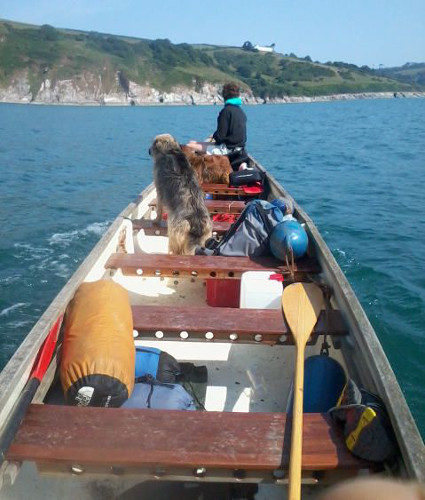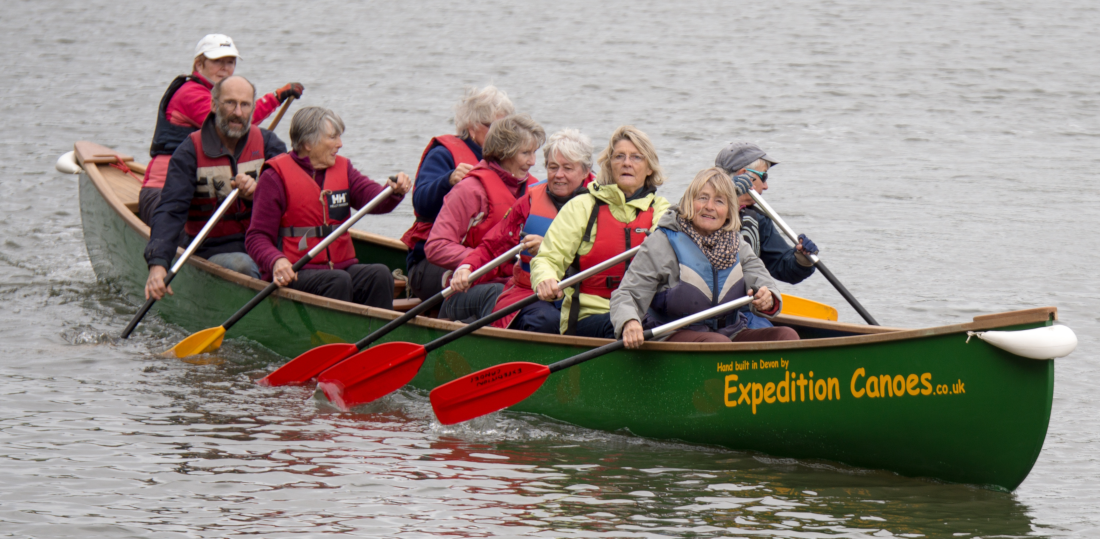
The original 9 metre Longbow canoe design was commissioned by a commercial canoe operator wishing to carry 12 passengers and operate under Local Authority 12 Passenger Capacity Rules.
The 12 Passenger Rule maximises the ratio of clients to staff keeping staff wages at a minimum.
The canoes needed to be stable, controlled by one skipper (the helmsman) and easy to paddle for complete beginners.
The design closely resembles the Voyager Canoes used in the Canadian wilderness for exploration and transportation for the fur trade, as a “marine pickup truck”.

Many Voyager Canoes could be split into two sections for easier overland transportation/portage.
This also works well in a modern setting for road trailer transport and easier off-season storage.
Traditional canoe hire businesses tends to cater for a relatively narrow cohort of customers such as mainly young, fit or experienced individuals.
The Longbow however has catered for newborns to octogenarians in addition to these traditional customers.
Canoeing in a Longbow makes for an exciting and daring option for clients who would never dream of canoeing.
Hen and stag parties can also be accommodated with the operator remaining in control, despite the sometimes challenging efforts of the customers.
Interestingly, WI groups can also get particularly rowdy.
Especially popular and profitable are corporate training outings which often result in future bookings over a long period.
The Longbow responds well to co-ordinated teams, especially if a race situation is set up.
Minimum maintenance was another required feature and removable seats allow for the potential carrying of a wheelchair which make the Longbow truly inclusive.
Canoe racing provides spectacular viewing for participants and spectators, which have been particularly successful at charity fund raising events.
Wildlife watching trips have been extremely popular as a silent canoe can get closer than most vessels.
